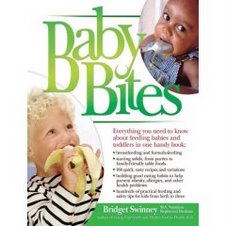Ah, summer...although officially it's not summer yet. We've got all the essentials--kids out of school, pool's open and it's definitely hot enough to fry an egg on the sidewalk. And let's not forget all the summer fruit arriving at your local market: strawberries, blueberries, cherries and melon (to name a few) are yours for the tasting. Adding the bounties of summer to your table also do some favors for your health. Summer fruits are packed with vitamin C, potassium, fiber and water. Potassium is good for your blood pressure, vitamin C is good for your immune system and we all need fiber and water to help the digetive system do it's thing. I must mention all the antioxidants in your summer fruit that you could never get by taking a vitamin supplement!
Which brings me to one of my favorite summer fruits, blueberries. That bluish color that we love so much (except when it's on your white shirt) is provided by an antioxidant called anthocyanidin. Anthocyanidins neutralize free radicals that can lead to cataracts, glaucoma, heart disease, cancer and much more. Blueberries even contain 38% more of that antioxidant than red wine! Just imagine how healthy we'd all be if we had a cup of blueberries every night with dinner! Blueberries are also brain food--animals studies show they decrease oxidative stress in the brain, which could lead to Alzheimer's.
I just had a cup of them on top of my cereal, which inspired me to inspire you to eat them too!
Five Ways to Eat Blueberries at Breakfast:
1. On your cereal. What could be easier? (My personal fav is Kashi Go Lean Crunch) If you like your cereal hot in the summer, blueberries are great thrown in at the last minute of cooking. They burst and then you've got blue oatmeal. Yum!
2. Over a whole grain waffle. What I like to do is spread the waffle with natural peanut butter and then stick the blueberries in the holes. The berries stick to the peanut butter and you can pick it up with your hands. Fun for kids!
3. On your bagel. Spread some lowfat of FF cream cheese on that small, whole grain bagel and again stick the blueberries on. Make a smiley face to start your day on the right foot!
4. As a crisp or in a quick bread. OK so it sounds more like dessert, right? You can make a low sugar blueberry crisp with oatmeal and eat it for breakfast. Seconds anyone? Don't forget the milk!
5. In your pancakes--or crepes. I know what you're thinking--this dietitian likes sweets! Well, true, but here I'm advocating for a healthier pancake. Even Aunt Jemima makes whole wheat pancakes now. Or take the regular mix, throw in some wheat germ and oatmeal in place of some mix, and use milk instead of water. Mix in blueberries in the whole batch, or just poke them on top of the pancakes while they are cooking. Crepes are thinner so you can eat more of them and fill them to overflowing with berries and light whip cream.
6. In a race. Those with teenagers at home will like this one. See how many you can throw in the air and catch with your mouth. If you have a toddler at home, you can see who eats more--the baby or the dog waiting for the baby to throw them over the high chair!
7. I only promised 6 ideas, and here is the bonus. I don't count it in the official list because it is more of a thinking out loud idea. All the above are sweet ideas, but now that I'm trying to eat more protein (increases satiety, prevents muscle loss from aging etc) how could I fit blueberries into a hot, high protein menu? How about a blueberry omelette? A stretch to be sure, but you could put blueberries and cream cheese in the omelette. (Actually if you google this, you fill find lots of recipes!)
See you at Sam's--where I buy 2 quarts of blueberries a week! Enjoy!
More health benefits of blueberries.
Wednesday, June 16, 2010
Tuesday, June 1, 2010
Allergies? Eat This
For many allergy sufferers, this is a really annoying time of year. But for kids, it can be even worse since allergies often lead to painful ear infections. And, many doctors don't want to prescribe allergy medicines for young children.
So what's a parent to do? Feed your child allergy-friendly foods, of course!
1. Eat foods rich in folate. Researchers at Johns Hopkins University have found that people with the highest blood levels of folate have a 40% less chance to have antibodies to allergens in the bloodstream or to suffer from allergic skin rashes.
Folate Rich Foods:
Lentils (which can easily be made into baby food for babies)
Spinach
Black, navy and pinto beans
Artichokes
Beets (another baby favorite--just don't forget the bib because beet stains are bad!)
2. Eat yogurt. Researchers at UC Davis found that people who ate just 6 oz of yogurt a day had fewer days with hay fever attacks--especially from grass pollens, and they also had fewer symptoms. Why? Keeping gut flora healthy is important for maintaining the immune system. (Antibiotic therapy throws this balance of "good" bacteria" way off.) Yogurt smoothies anyone? Yogurt makes a great dip for toddlers to eat more fruit.
3. Eat coldwater fish like salmon. The omega-3 fatty acids in fish have anti-inflammatory properties which protect against the overproduction of some antibodies that can trigger allergies. They may also reduce the severity of allergies. The American Academy of Pediatric's view on introducing fish to babies has changed; unless you have allergies in your family, their policy says you can introduce any food after 4-6 months of age. (However, if you do have severe allergies in your family, check with your child's doctor, just to make sure.) If you do serve fish to your baby, make sure that it is the proper texture for her developmental stage. And make sure there are no bones. Some kid-friendly foods are also fortified with omega-3's--such as milk, yogurt and some infant cereals and baby foods.
4. Eat Fruits and Vegetables: Especially those rich in Vitamin C and beta-carotene. These antioxidants are said to also reduce inflammation in the lungs, which can contribute to asthma attacks. Think citrus fruit, and dark orange fruits and vegetables: mango, peach, apricot, sweet potato, carrots, red peppers.
So what's a parent to do? Feed your child allergy-friendly foods, of course!
1. Eat foods rich in folate. Researchers at Johns Hopkins University have found that people with the highest blood levels of folate have a 40% less chance to have antibodies to allergens in the bloodstream or to suffer from allergic skin rashes.
Folate Rich Foods:
Lentils (which can easily be made into baby food for babies)
Spinach
Black, navy and pinto beans
Artichokes
Beets (another baby favorite--just don't forget the bib because beet stains are bad!)
2. Eat yogurt. Researchers at UC Davis found that people who ate just 6 oz of yogurt a day had fewer days with hay fever attacks--especially from grass pollens, and they also had fewer symptoms. Why? Keeping gut flora healthy is important for maintaining the immune system. (Antibiotic therapy throws this balance of "good" bacteria" way off.) Yogurt smoothies anyone? Yogurt makes a great dip for toddlers to eat more fruit.
3. Eat coldwater fish like salmon. The omega-3 fatty acids in fish have anti-inflammatory properties which protect against the overproduction of some antibodies that can trigger allergies. They may also reduce the severity of allergies. The American Academy of Pediatric's view on introducing fish to babies has changed; unless you have allergies in your family, their policy says you can introduce any food after 4-6 months of age. (However, if you do have severe allergies in your family, check with your child's doctor, just to make sure.) If you do serve fish to your baby, make sure that it is the proper texture for her developmental stage. And make sure there are no bones. Some kid-friendly foods are also fortified with omega-3's--such as milk, yogurt and some infant cereals and baby foods.
4. Eat Fruits and Vegetables: Especially those rich in Vitamin C and beta-carotene. These antioxidants are said to also reduce inflammation in the lungs, which can contribute to asthma attacks. Think citrus fruit, and dark orange fruits and vegetables: mango, peach, apricot, sweet potato, carrots, red peppers.
Subscribe to:
Posts (Atom)




